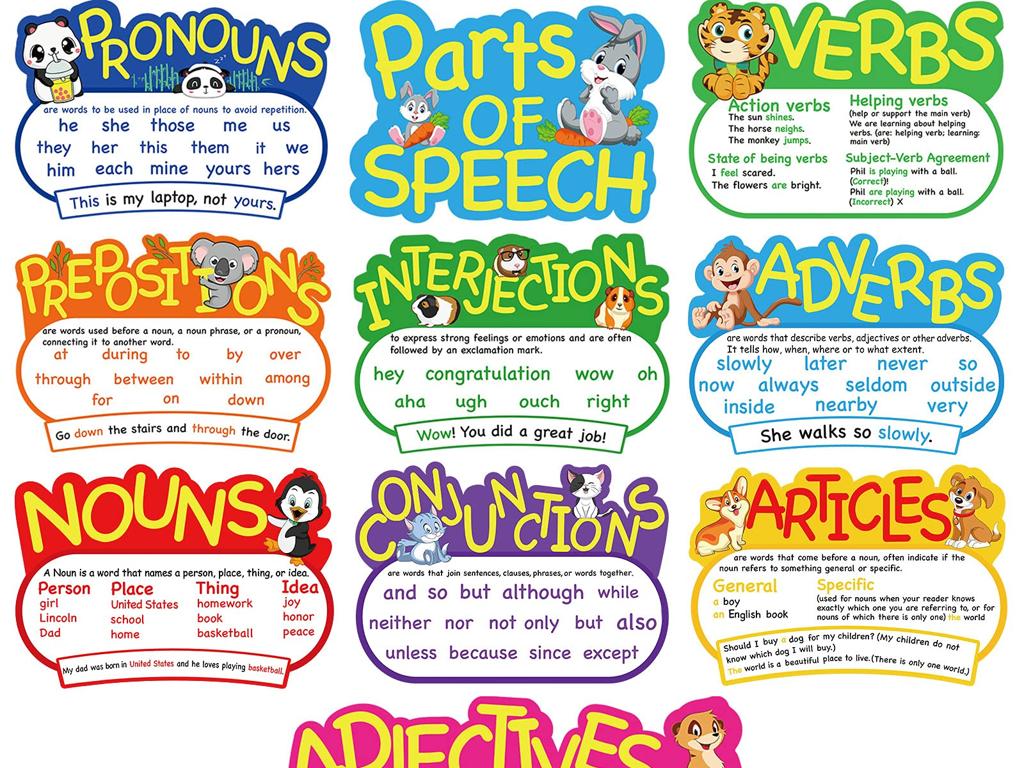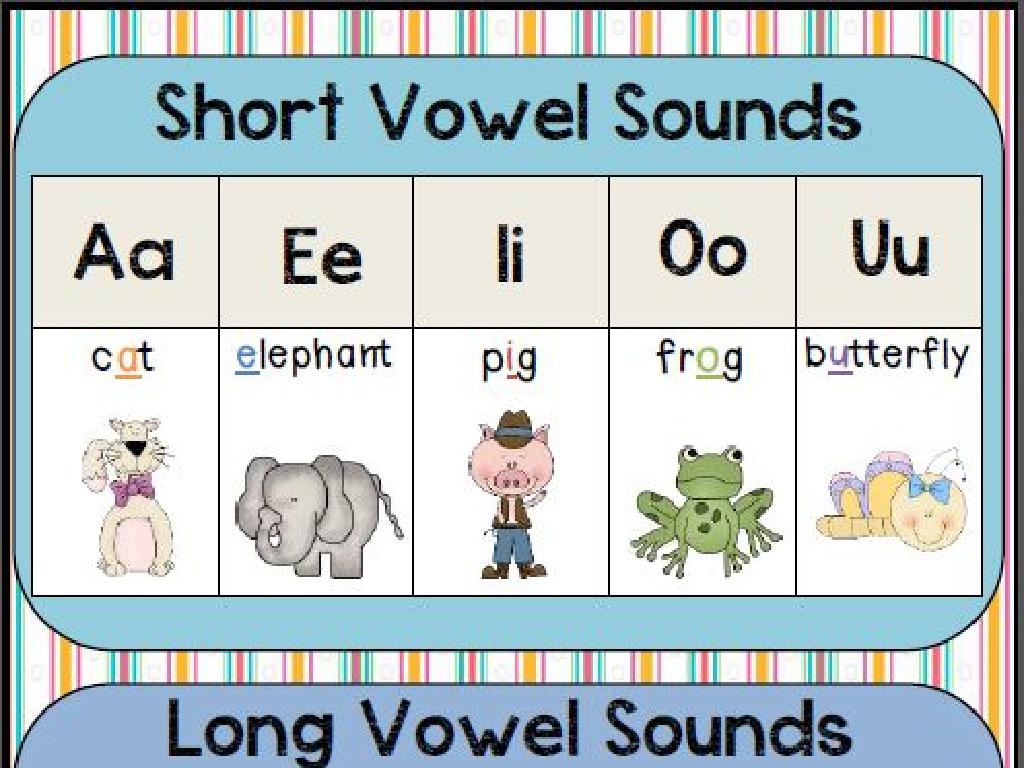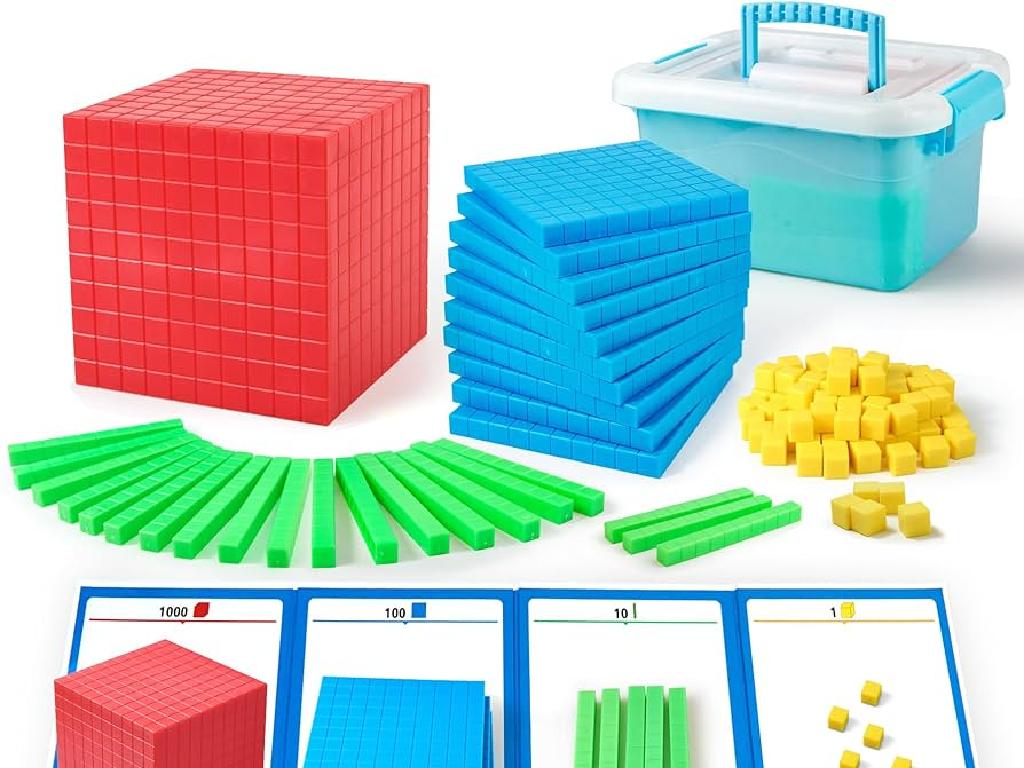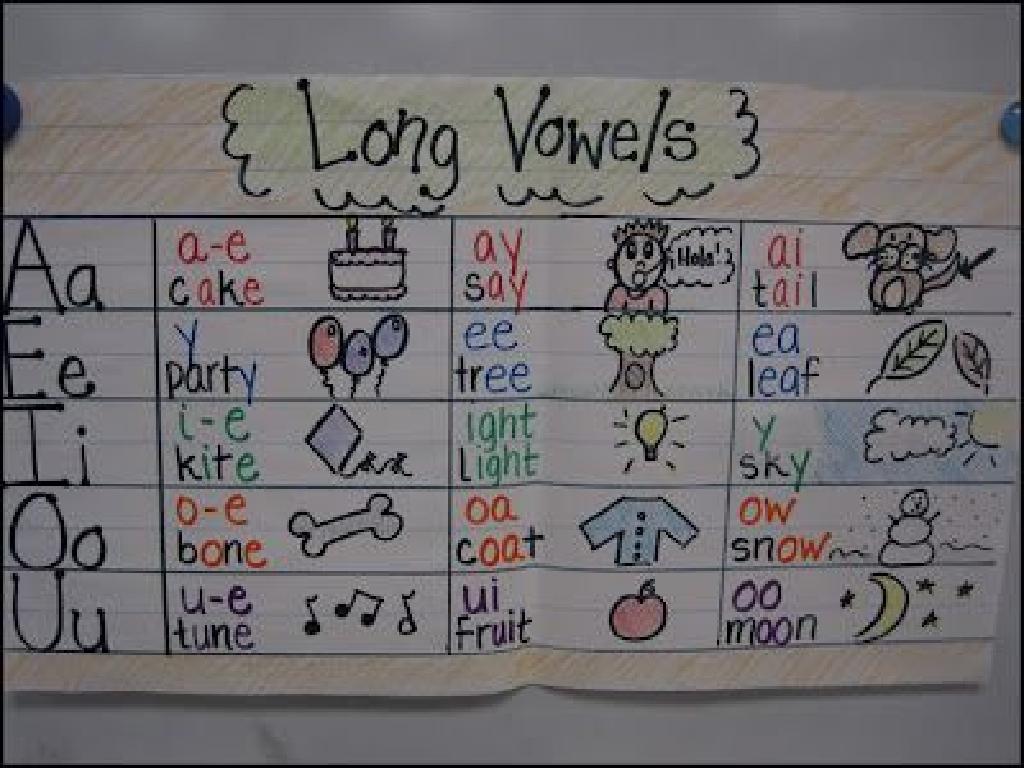Add And Subtract Money: Multi-Step Word Problems
Subject: Math
Grade: Fifth grade
Topic: Money
Please LOG IN to download the presentation. Access is available to registered users only.
View More Content
Introduction to Money Math: Adding & Subtracting
– Understanding money is essential
– Money management is a key life skill for making purchases and budgeting.
– Today’s focus: Add & Subtract money
– Learn to combine and remove amounts in transactions.
– Solve real-life money problems
– Use math skills in everyday scenarios like shopping and saving.
– Practice with multi-step questions
– Tackle problems that require more than one step to find the solution.
|
This slide introduces the concept of money math, emphasizing its importance as a fundamental life skill. Students will focus on adding and subtracting money, which are crucial operations for managing finances in real-world situations. The lesson will involve solving multi-step word problems that mimic real-life scenarios, such as calculating change, total costs, and savings over time. Encourage students to think about situations where they handle money, like at a store or when saving allowance. Provide examples of word problems and guide them through the steps to solve these problems. This will help them understand the practical application of math in everyday life and build their problem-solving skills.
Currency Denominations and Calculations
– Recap US currency denominations
– Review bills: $1, $5, $10, $20, and coins: penny, nickel, dime, quarter
– Understand value of each bill and coin
– Each denomination has a unique value, e.g., a dime is worth 10 cents
– Counting money practice
– Add up different bills and coins to find total amounts
– Solve multi-step money problems
– Apply addition and subtraction in real-world scenarios involving money
|
This slide is aimed at reviewing the basics of US currency, including the different bills and coins, and understanding their individual values. Students should be able to recognize and count money effectively. The practice should involve identifying and adding up various denominations, as well as subtracting to make change. Introduce multi-step word problems that require students to use both addition and subtraction to find solutions. Encourage students to think about how they use money in everyday life to make the problems more relatable. Provide examples such as calculating total cost, making change, or budgeting for a small purchase.
Adding Money: Bills and Coins
– Understand different denominations
– Example: Combine bills and coins
– If you have 2 five-dollar bills and 3 quarters, how much do you have?
– Class Practice: Lunch money addition
– Add up the amount you might spend on lunch using different bills and coins.
– Steps for successful addition
– Line up decimal points, add bills first, then coins, and combine.
|
This slide introduces the concept of adding different denominations of money, which is a practical skill for everyday life. Start by explaining the various denominations of bills and coins in US currency. Use an example to show how to add bills and coins together, such as combining 2 five-dollar bills with 3 quarters. For class practice, simulate a real-life scenario where students add up their lunch money, which can include a mix of bills and coins. Emphasize the importance of lining up decimal points and adding larger denominations first to simplify the process. This activity will help students become comfortable with handling money and performing multi-step addition.
Subtracting Money: Making Change
– Understanding subtraction with money
– Example: Calculating change after purchase
– If an item costs $2.75 and you pay with $5, how much is your change?
– Class activity: Buying a snack
– Imagine buying your favorite snack and figuring out the change from $5 or $10
– Discussing different outcomes
– We’ll explore how different snacks lead to different change amounts
|
This slide introduces the concept of subtracting money in the context of making change. Start by explaining the basics of subtraction and how it applies to money. Use an example to show how to calculate change when a customer buys an item. For the class activity, present a scenario where students buy a snack and calculate how much change they would receive from a given amount. Provide different snack options with varying prices to allow for a range of answers and encourage students to practice mental math. This activity helps students apply their subtraction skills to real-life situations and understand the value of money. Ensure to have a discussion afterward to address any questions and to go over different outcomes based on the snacks chosen.
Understanding Multi-Step Word Problems
– Define Multi-Step Word Problems
– Problems requiring more than one step to find the solution.
– Steps to solve multi-step problems
– Read carefully, identify all steps, solve in sequence.
– Example: Shopping spree budgeting
– If you have $50, how many toys can you buy with prices $15, $10, $5?
– Practice with class activity
|
This slide introduces students to multi-step word problems involving money. Start by defining multi-step word problems as those that require more than one mathematical operation to solve. Teach students to break down the problem by reading it carefully, identifying all the required steps, and solving each step in sequence. Use a relatable example like managing a budget during a shopping spree to illustrate the concept. For instance, if a student has $50 to spend, how can they allocate this money to purchase toys with different prices? This example will help them practice addition and subtraction in a practical context. Conclude with a class activity where students solve similar problems in groups or individually to reinforce their understanding.
Solving Multi-Step Money Problems
– Read the problem carefully
– Identify all the necessary steps
– Example: School supplies purchase
– If a project needs paint ($15), brushes ($5), and paper ($10), how much is spent?
– Group Activity: Step-by-step solution
– Work together to find the total cost and subtract from your budget.
|
This slide introduces students to solving multi-step word problems involving money. Start by emphasizing the importance of reading the problem carefully to understand what is being asked. Then, guide students to break down the problem into smaller, manageable steps. Use the example of buying supplies for a school project to illustrate how to approach a multi-step problem. For the group activity, encourage students to collaborate and discuss each step, ensuring they understand how to add the costs of individual items and then subtract from a given budget. Provide support as needed and facilitate the discussion to keep students on track. Possible variations of the activity could include different budgets or additional items to purchase, allowing students to practice with a range of scenarios.
Practice Time: Solving Money Word Problems
– Solve individual word problems
– Share solutions with the class
– Explain your problem-solving steps
– Discuss challenges faced
– Were there any tricky parts?
– Reflect on interesting discoveries
– Did you find any patterns or shortcuts?
|
This slide is designed for student engagement through individual practice followed by group discussion. Provide a set of multi-step word problems involving addition and subtraction of money. Encourage students to use their problem-solving skills independently. After solving, they will share their methods and answers with the class, fostering a collaborative learning environment. Facilitate a discussion on any difficulties encountered and guide them through any misconceptions. Also, prompt them to share any strategies or patterns they noticed that made solving easier. This will help students learn from each other and understand different approaches to the same problem.
Class Activity: Classroom Market
– Each student receives a budget
– Select items to ‘purchase’ in class
– Calculate your total spending
– Add up the prices of the items you chose
– Determine the change received
– Subtract total spending from your budget
|
In this interactive class activity, students will engage in a simulated shopping experience to apply their knowledge of adding and subtracting money. Each student will be given a pretend budget and will ‘buy’ items from a classroom market setup. They will need to calculate their total spending and figure out how much change they should receive. This activity helps students understand practical applications of math in everyday life. For the teacher: Prepare a variety of items with price tags, play money for the budget, and worksheets for calculations. Possible variations of the activity could include offering discounts, handling returns, or dealing with taxes to add complexity for advanced students.
Wrapping Up: Money Management
– Review of key concepts
– Significance of managing money
Understanding money helps with future financial decisions.
– Homework assignment
Solve multi-step problems on the provided worksheet.
– Practice makes perfect
The more you practice, the better you’ll handle real-life money situations.
|
As we conclude today’s lesson on adding and subtracting money through multi-step word problems, it’s important to recap the key concepts we’ve covered. Emphasize the importance of money management skills and how they apply to everyday life, preparing students for future financial responsibilities. For homework, students are expected to complete the worksheet, which includes various multi-step money problems to reinforce what they’ve learned. Encourage them to practice diligently, as these skills are not only crucial for math proficiency but also for making informed decisions in real-world financial situations.






